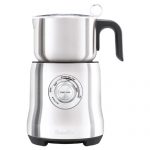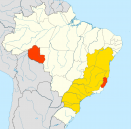
Coffee stains can ruin expensive clothing, upholstery or even carpets. However before rushing to replace anything due to accidental spills, understanding the mechanisms responsible for making the stain and then undoing it can perhaps help to salvage the stained article.
How Coffee Stains Form:
Scientists have discovered that the formation of coffee stains is actually a fluke of physics. Coffee is made up of spherical particles that dry differently from traditional liquids which contain more oblong particles. In coffee, a cluster of molecules is about one micro-meter wide. That translates to one millionth of one meter which in turn is around 10,000 times bigger than a single coffee molecule.
The liquid around the edges in a drop of coffee dries faster as the edges are thinner. The liquid from the center then flows outward and takes the place of the evaporated liquid, carrying the suspended coffee solids with it. Once all the liquid evaporates a ring of solids is left behind on the article with the spill.
Why Are Coffee Stain So Stubborn?
Coffee and its tannins combined with the high temperature of the drink produces stains that are tough to get rid of. Tannin is naturally occurring dye found in plants; it gives coffee its characteristic, somewhat bitter, taste. This is a great thing, provided it does not end up on an expensive garment or the carpet! The heat in the drink makes the fabric more penetrable, at times the heat even breaks down any fabric protection that may be present allowing the coffee spill to pierce deeper into the material. If the spill is not treated immediately, it can latch onto the fibers of the article making removal that much more difficult.
If that wasn’t enough, some decaffeinated brands of coffee have additional artificial colours to make it more appealing and artificial colours are very hard to remove. Add cream and sugar to the brew and you have a total mess on your hands.
Science of Coffee Stain Removal:
Different types of stains fall into different categories and need to be treated differently to remove them. Sharply coloured stains such as those produced by a coffee spill, fall into a class of stains known as oxidize-able. Stain removers containing bleaching mediators, most commonly hydrogen peroxide work by breaking down the colour producing portion of the chemicals responsible for the stain. As the bonds in this chemical agent are broken, the stain slowly disappears. The issue with hydrogen peroxide is that it does not work too well at temperatures below 40˚C. It works great provided the article being washed can withstand the 40˚C or above temperature.
Simple Methods of Removing Coffee Stains:
The most important step in removing coffee stains is to pre-treat the stained area as quickly as possible. The faster the pre-treating takes place after the spill, the better the chances of eliminating the stain totally. However, if that is not always possible, then here are some interesting methods that can help.
Vinegar: Water soluble stains, like those made by black coffee can be eliminated by treating the affected area with vinegar. If the stain is fresh, simply blot the area with a towel soaked with white vinegar then just launder normally. For larger, or older stains it is best to allow the garment to soak overnight in one part cold water mixed with three parts vinegar.
Baby Wipes: These are great for soaking up fresh coffee spills from upholstery or a carpet.
Egg yolk: Believe it or not, many people claim that this unusual ingredient works great on coffee stains. Just rub a beaten egg yolk onto the stain with a towel for roughly a minute and rinse.
Shaving Cream: Another unorthodox method of stain removal involves the use of shaving cream. Simply dab a little on the stained area, blot to allow it to sink in and let sit for about half an hour. After the time is up lightly scrub the spot while rinsing under water to totally eliminate the mark.
Salt: here is an ingredient that is easily available whether you are at a formal gathering or at home. Scatter a generous helping of salt onto the stained area so it can penetrate into the soiled area. Give it a couple of minutes and just casually rub it off.
Cold Water: Put the stained article under cold running cold water from the opposite side of the stain. This will give you the best chances of completely getting rid of tough stains. Remember, the longer they are left untreated the slimmer the chances removing them completely.








